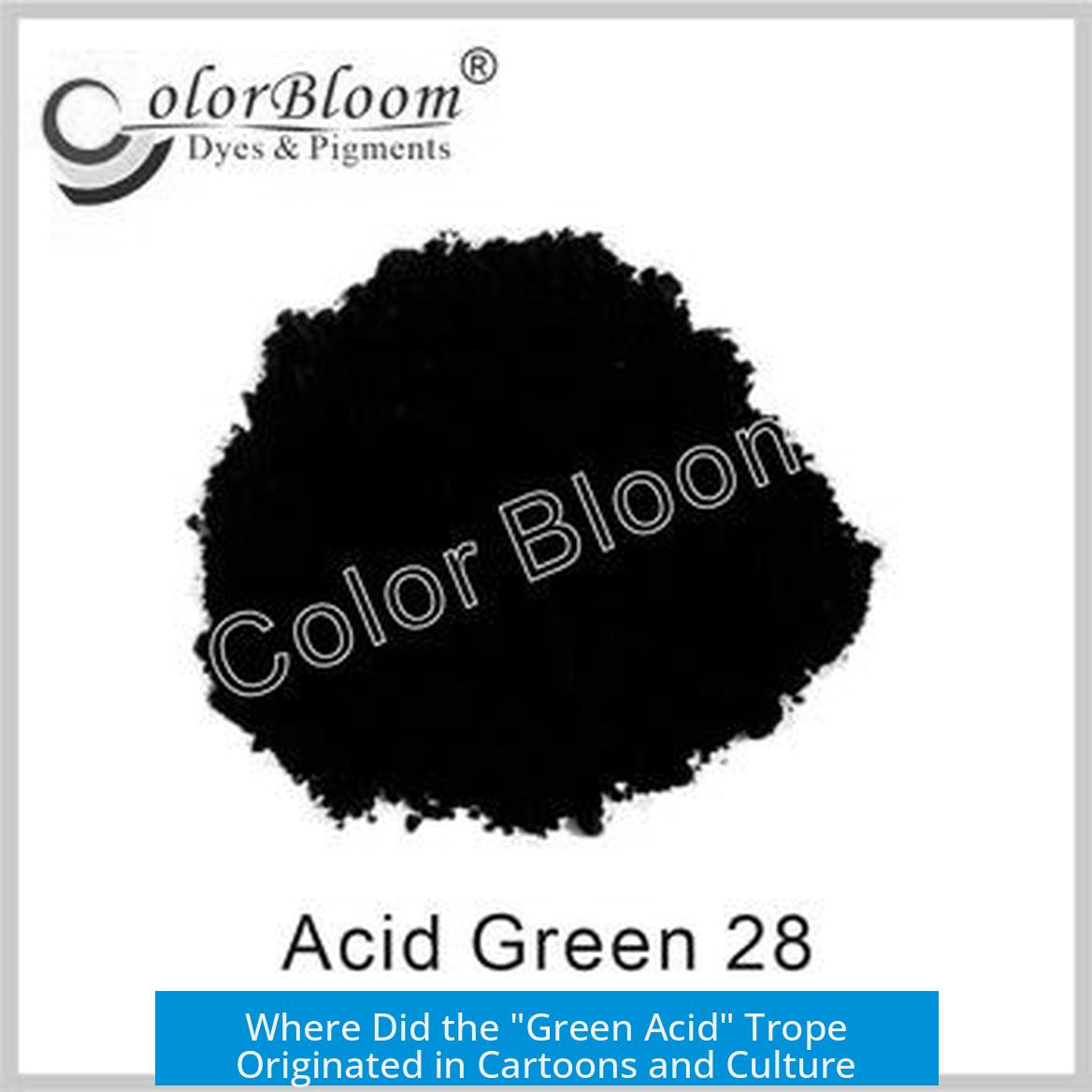Where Did the “Green Acid” Trope Come From?
The “green acid” trope originated from a blend of real chemical reactions, visual storytelling needs in cartoons, historical color symbolism, and cultural references that made green the iconic color to represent dangerous acids in media.
Chemical Reactions Producing Green Tints
Some actual acid reactions yield a green color, lending scientific backing to the trope. For example:
- Nitric acid and copper: Their reaction forms a green compound resembling the hues seen in cartoons. The process releases nitrogen dioxide gas, adding to the visual drama.
- Sulfuric acid and table salt: Mixing these produces a green tint, another real-world interaction that might have inspired the coloration.
Though not common for all acids, these reactions may have influenced the visual shorthand for acid in media.
Visual and Dramatic Necessities in Cartoons
Cartoons aim to grab attention, especially for young audiences unfamiliar with real chemicals. They use bright, fluorescent green shades to indicate danger and toxicity. Characteristics include:
- Fluorescent green glow: Exaggerates the alien or hazardous nature of the acid.
- Smoking or bubbling effect: Adds movement and danger cues.
This artistic choice bypasses realism for clear, emotional signaling.
Historical and Cultural Influences
Several historical factors shaped the green acid depiction:
- Radium paint: Green, glowing, and radioactive radium paint associated with danger may have symbolically transferred to acid imagery.
- Color availability: In early animation, green stood out since red and blue were already common; green filled the visual gap as an eye-catching color.
- Era of origin: The trope dates back at least to World War II media, cementing it as a familiar visual language.
Additional Contributions
- Stomach acid and bile: Some cartoons show stomach acid as green reflecting the presence of bile, which adds biological realism to some depictions.
- Chlorine association: Hydrochloric acid contains chlorine, often represented as green, potentially linking common acid perception to the color.
Summary of Key Points
- Real chemical reactions like nitric acid on copper produce green hues influencing the trope.
- Cartoons choose bright green for dramatic effect and clear danger signaling.
- Historical links to green radium paint add to the dangerous image of green acid.
- Green was a practical choice due to limited color palettes in early animation.
- Biological and chemical associations with green (bile, chlorine) reinforce the trope.
Why do cartoons often show acid as green instead of clear?
Green acid stands out more visually. Clear liquids don’t have the same impact, especially for young viewers. Bright lime green grabs attention and signals danger simply and clearly.
Is the green color based on real chemical reactions?
Yes, some acids turn green when reacting with metals. For example, nitric acid reacting with copper creates a green color similar to cartoon acid. Sulfuric acid mixed with salt can also appear green.
How did radioactive materials influence the green acid trope?
Radium paint used in the past glowed green and was linked to danger. This association helped make green a color symbolizing hazardous substances like acid in media.
When did the green acid trope first appear in media?
The trope dates back to around World War II. At that time, green was a vivid, available color not used much for other substances, making it ideal for showing acid visually.
Does the green acid color have any relation to real bodily acids?
Sometimes stomach acid is shown as green in cartoons because of the bile pigment in it. This biological detail may have inspired some green acid depictions.
Is chlorine related to the green acid image?
Hydrochloric acid contains chlorine, which is often shown as green in illustrations. This might have led people to link acid with the color green in cartoons.





Leave a Comment